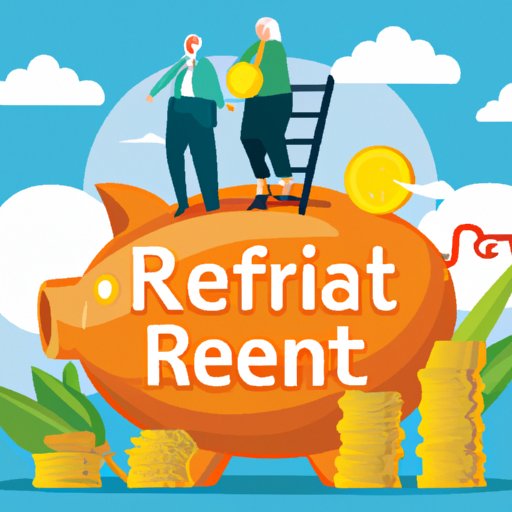
I. Introduction
Retirement is a significant milestone in every working individual’s life. However, one of the most challenging questions is how much money do I need to retire? To answer this question, it’s crucial to understand all the factors that go into estimating your retirement expenses. In this article, we’ll explore how much money you need to retire at age 65 and factors to consider when planning for retirement.
II. Estimating Retirement Expenses
Before you retire, it’s important to estimate your expenses. One way to start is by researching the cost of living in the area where you plan to retire. A general estimate of your expenses should include housing, healthcare, utilities, and food. You also need to calculate how much you need to spend on leisure activities, hobbies, and other things you plan to do during retirement. By adding up all these expenses, you get a baseline for how much you need annually.
Once you know what your annual expenses will be, you can use the popular 4% rule to estimate how much savings you’ll need. The 4% rule states that you can safely withdraw 4% of your investments annually without running out of money in retirement. For example, if your annual expenses are $80,000, you’ll need to save $2 million before you retire (80,000 divided by 0.04).
III. The Importance of Early Retirement Planning
The earlier you start planning for retirement, the better. It’s essential to regularly set aside money for your retirement savings plan. In general, it’s advisable to save at least 15% of your income every month. Suppose you have a long time before retirement, investing in a diversified portfolio of stocks and bonds can help your investments grow over time.
Choosing the right retirement planning options can be a challenge. You could consult a financial planner or advisor for advice on investment options and how to balance your investments. Different investment options, including 401(k) retirement plans and Roth IRAs, have their benefits and disadvantages.
IV. Cutting Down on Retirement Expenses
Retirement expenses can be a significant concern for retirees. Downsizing or relocating to a less expensive area could significantly cut down your expenses. Selling your large family home and moving to a smaller apartment or retiring to a cheaper city could lead to cost savings. Before taking any of these steps, you should do your research and consider the pros and cons of any decision you make.
V. Understanding Social Security Benefits
When planning for retirement, it’s essential to understand how Social Security benefits work and how much income you can expect to receive in retirement. Social Security benefits are calculated based on a career’s average earnings up to a maximum of 35 years. You can start receiving benefits as early as age 62, but your monthly benefit amount increases by up to 8% every year that you delay receiving benefits up to age 70.
When budgeting for retirement, you can factor in your anticipated Social Security benefit amount to help cover your expenses. You may access your Social Security statement and use a calculator provided by the SSA online.
VI. Adjusting for Inflation and Economic Factors
Inflation and changes in market conditions are typical and can impact retirement savings. As such, retirement planning should account for these variables. It’s important to regularly review and adjust your retirement plan accordingly to stay on track with your goals. Strategies like choosing inflation-indexed bonds or other types of investments, and reviewing your plan every year or so, are essential components of this aspect of retirement planning.
VII. Increasing Retirement Savings
If you’re not on track to save the amount of money you need to retire, there are steps you can take to increase your savings. Contributing to a 401(k) or other company retirement plan with matching employer contributions will help grow your retirement savings and reduce your taxes. An IRA, Roth IRA, or self-employed retirement plan such as a Solo 401(k) is another option worth considering; consult a qualified financial planner for expert advice.
VIII. Addressing Common Misconceptions
There are some common misconceptions about retirement planning that can hinder long-term success. Some people think that downsizing to a smaller home or relocating to a less expensive city is the right retirement planning strategy. While these options can be effective, it’s critical to research and decide if these actions align with your personal goals, preferences, and resources. Consulting a financial planner or advisor and seeking professional advice can help avoid costly errors.
IX. Conclusion
Planning for retirement can be challenging, but making informed choices about your income and spending during retirement will give you a sense of security and stability. The earlier you start saving, the more money you’ll have towards your retirement savings plan. Understanding factors like inflation, market risks, and Social Security benefits is also crucial.
Make informed choices based on your goals, preferences, and resources. This article should provide a good starting point for individuals seeking guidance on retirement planning. Investing in your future retirement could mean a whole new world of possibilities post-retirement.




